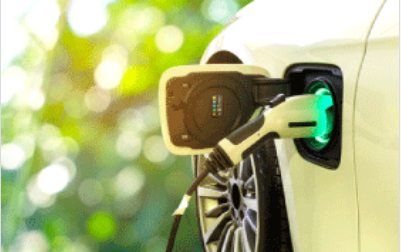Safety guidance
Page updated: 29/07/2024
The three types of incidents our vehicles and drivers were most likely to be involved in and the control measures / recommendations now in place:
- Reversing: 35.71%
Fitting reversing sensors, rear view cameras have helped to control the number of incidences, but the only way to remove the risk altogether is to ensure a Banksman assists the driver when reversing. - Collision with a fixed object: 30.15%
Examples of this include collision with buildings and street furniture. Drivers must slow down when approaching hazards to assess if it is safe and there is sufficient room to pass. - Hitting a stationary vehicle: 10.31%
Excessive speed for the road conditions, coupled to insufficient awareness of other vehicles and the poor use of mirrors are all considered to be contributory factors.Over three quarters of all RTCs, where we were at fault, fall into one of these categories. Supervisory staff must raise awareness of the hazards and of the preventative measures at frequent intervals to the mobile workforce during toolbox talks and other briefings.
This safety guidance below is for drivers of council-owned vehicles including pool / hire cars.
When driving on minor roads and country lanes it’s not uncommon to be faced with the hazard of horses and riders. You are advised to observe the following points when approaching horses and riders on the road:
- Slow down when you see a horse, and drive slowly past them
- Give them plenty of room and be ready to stop
- Do not scare animals by sounding your horn or revving your engine
- Look out for horse riders' signals and be aware that they may not move to the centre of the road prior to turning right
- Riders of horses and ponies are often children - so please take extra care
- Treat horses as a potential hazard and expect the unexpected
Remember!
Horse are powerful animals but they are vulnerable, easily frightened and can panic around fast-moving vehicles. When you see horses on the road - please slow down.
Using a mobile phone or similar device whilst driving
Using a mobile phone or similar device whilst driving means that you may become distracted from the road. It is illegal to drive a vehicle while using a hand-held mobile phone. This also applies to any similar device (that must be held at some point) to:
- Send or receive spoken or written messages or still or moving images
- Access the internet
- To make or receive calls
- To send or receive picture and text messages
Current Authority policy prohibits the use of hand held mobile phones whilst driving.
In addition where hands free kits are provided.
The message should be brief and outgoing calls should only be made when the vehicle is parked in a safe, legal place, with the engine turned off.
Penalties for using your phone while driving
If you're caught using a hand-held mobile phone or similar device while driving or riding, this is illegal.
For up to date information visit www.gov.uk
At all times, drivers are responsible for the security and immobilisation of their vehicles. This includes when vehicles are parked. The law states that vehicles must only be parked in positions that are both suitable and legal. Drivers should note that a failiure to comply can result in prosecution.
Locations not regarded as suitable include:
- The carriageway or the hard shoulder of a motorway except in an emergency
- A pedestrian crossing, including the area marked by the zig-zag lines
- A clearway
- A cycle track
- Near a school entrance
- Anywhere you would prevent access for Emergency Services
- At or near a bus stop or taxi rank
- On the approach to a level crossing
- Near the brow of a hill or hump bridge
- Opposite or within 10 metres (32 feet) of a junction, except in an authorised parking space
- Where the kerb has been lowered to help wheelchair users and powered mobility vehicles
- In front of an entrance to a property
- On a bend
You MUST NOT leave your vehicle or trailer in a dangerous position or where it causes any unnecessary obstruction of the road: Laws RTA 1988, sect 22, Highway Code & CUR reg 10.
In addition, the following measures must be adhered to:
- Do not park facing against the traffic flow
- Stop as close as you can to the side of the road
- You MUST switch off the engine, headlights and fog lights
- You MUST apply the handbrake before leaving the vehicle
- Take the keys out of the ignition and secure them
- You MUST ensure you do not hit anyone when you open your door. Check for cyclists or other traffic
Additional measures when parking on a hill:
- You may, once the handbrake is applied and the engine is switched off, place the vehicle into gear. This may be first or reverse gear. Always be sure however to remember to put the vehicle into neutral before starting the vehicle.
- Turn the steering wheel into the kerb. This provides a secondary measure to prevent the vehicle rolling away.
Remember to:
- Put all valuables out of sight and make sure your vehicle is secure.
- Lock your vehicle.
- Never leave the keys in the ignition when the vehicle is unattended.
- Never leave a vehicle unattended with the engine running.
- Close windows completely.
It is a legal requirement and Authority policy that you must wear a seat belt where one is fitted to any seat in any vehicle. When driving, you must only carry one person in each seat fitted.
Passengers aged 14 years and above are responsible for wearing their own seat belt. Below this age the Driver is responsible.
Children must use the correct car seat for their weight until they reach a height of 135 centimetres or their 12th birthday, whichever comes first. Expert guidance for the fitting of car seats for children can be found by contacting our Road Safety Team on 01267 228284.
Exemptions (Medical)
Your doctor may decide that you are exempt from wearing a seat belt on medical grounds. If so, they will issue a 'Certificate of Exemption from Compulsory Seat Belt Wearing', which you must:
- Keep in your vehicle
- Show to the police if you're stopped
NB: You must wear a seat belt if you're pregnant, unless your doctor certifies that you're exempt on medical grounds.
If you have an exemption from compulsory seat belt wearing you must inform Antonia Jones - Fleet Manager who will in turn notify our Motor Insurer.
Exemption (Operational)
Crews of domestic refuse collection vehicles are permitted to release their seatbelts when undertaking house to house collections. This exemption only exists where the vehicle travels no more than 50 metres between stops. Above this distance, seat belts must be worn.
At all times, drivers are responsible for the care, security and safety of their vehicle/trailer load and must exercise the maximum care to prevent loss, damage or theft. The appropriate method of restraint must always be used to secure the load.
Methods used to secure loads include:
- Nets
- Ratchet restraints
- Ropes
- Chains
- Chocks
- Vehicle headboards
- Contained bodies
Loads must always be distributed and secured over the vehicle’s Optimum Loading Point (OLP) to ensure even distribution and avoid any single axle being overloaded. Vehicle loading is delivered as part of the professional driver’s career development.
Overloading – The Penalties
The Road Traffic Act 1988 requires “vehicle users” to ensure that vehicles are not overloaded. If a vehicle is found to be overloaded both the driver and operator could be prosecuted or cautioned.
Legislation imposes fines of up to £5,000 for each offence. That means a fine for each overloaded axle, plus any overloading on the total weight. Also, if a vehicle is dangerously overloaded the driver could face a charge of dangerous driving which carries a maximum penalty of two years in prison.
Other offences within the Road Traffic Act include: refusal to allow the vehicle to be weighed, and obstruction of an officer which also carries a maximum fine of £5,000. If a vehicle is overloaded and results in someone being killed, both driver and operator could face going to jail for manslaughter or death by dangerous driving.
Enforcement
In addition to the Police and DVSA who act as known enforcement agencies, we will carry out random spot checks on our vehicles using mobile weighing apparatus.
Checks will include general roadworthiness assessments but will specifically target the overloading of vehicles. Reports will be submitted to senior management for their consideration and action.
More from Travel & Parking


